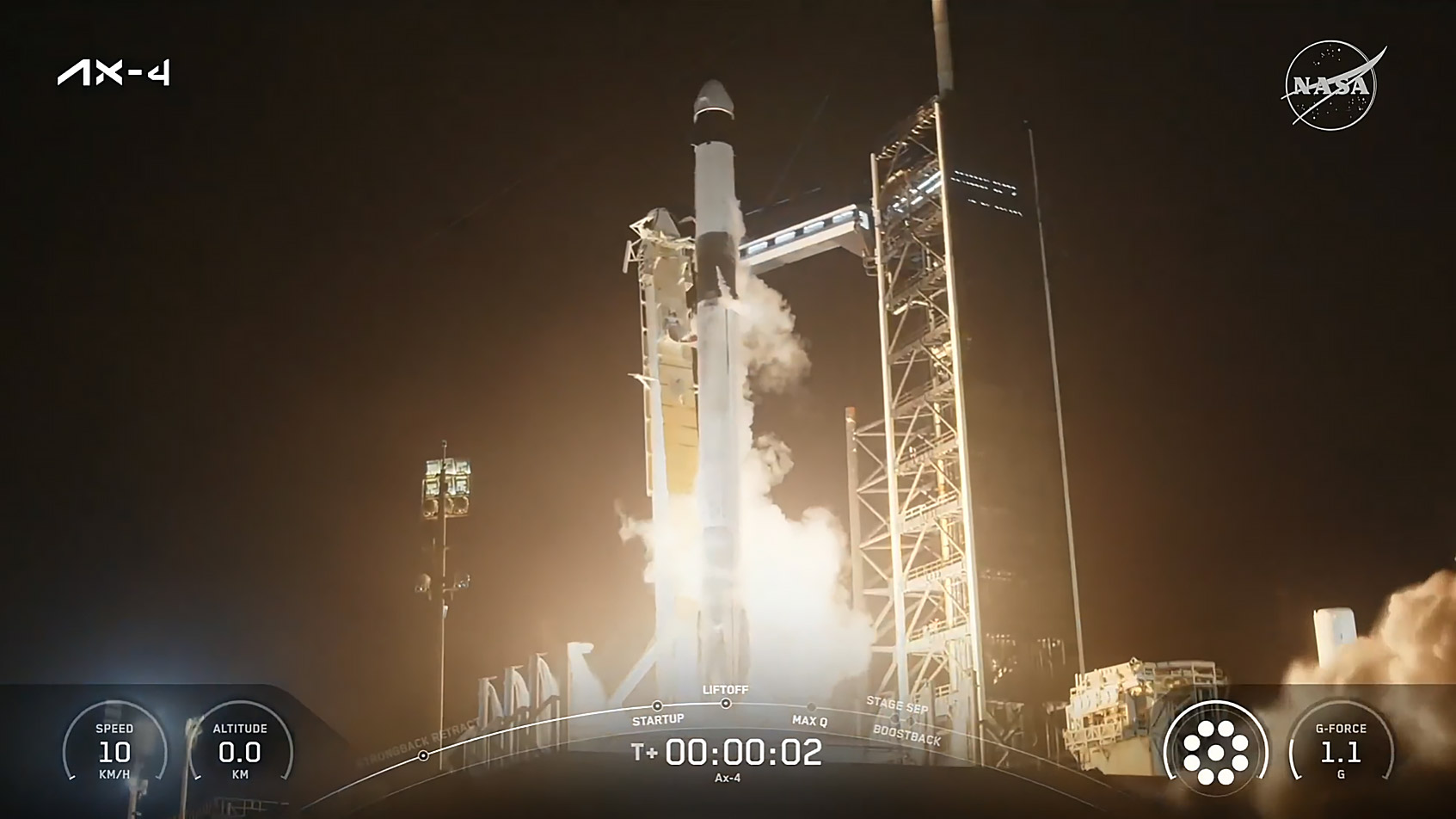
As part of NASA's efforts to expand access to space, four private astronauts are in orbit following the successful launch of the fourth all private astronaut mission to the International Space Station.
A SpaceX Dragon spacecraft lifted off at 2:31 a.m. EDT Wednesday from Launch Complex 39A at NASA's Kennedy Space Center in Florida, carrying Axiom Mission 4 crew members Peggy Whitson, former NASA astronaut and director of human spaceflight at Axiom Space as commander, ISRO (Indian Space Research Organisation) astronaut and pilot Shubhanshu Shukla, and mission specialists ESA (European Space Agency) project astronaut Sławosz Uznański-Wiśniewski of Poland and HUNOR (Hungarian to Orbit) astronaut Tibor Kapu of Hungary.
"Congratulations to Axiom Space and SpaceX on a successful launch," said NASA acting Administrator Janet Petro. "Under President Donald Trump's leadership, America has expanded international participation and commercial capabilities in low Earth orbit. U.S. industry is enabling astronauts from India, Poland, and Hungary to return to space for the first time in over forty years. It's a powerful example of American leadership bringing nations together in pursuit of science, discovery, and opportunity."
A collaboration between NASA and ISRO allowed Axiom Mission 4 to deliver on a commitment highlighted by President Trump and Indian Prime Minister Narendra Modi to send the first ISRO astronaut to the station. The space agencies are participating in five joint science investigations and two in-orbit science, technology, engineering, and mathematics demonstrations. NASA and ISRO have a long-standing relationship built on a shared vision to advance scientific knowledge and expand space collaboration.
This mission serves as an example of the success derived from collaboration between NASA's international partners and American commercial space companies.
Live coverage of the spacecraft's arrival will begin at 5 a.m., Thursday, June 26, on NASA+. Learn how to watch NASA content through a variety of platforms, including social media.
The spacecraft is scheduled to autonomously dock at approximately 7 a.m. to the space-facing port of the space station's Harmony module.
Once aboard the station, Expedition 73 crew members, including NASA astronauts, Nicole Ayers, Anne McClain, and Jonny Kim, JAXA (Japan Aerospace Exploration Agency) astronaut Takuya Onishi, and Roscosmos cosmonauts Kirill Peskov, Sergey Ryzhikov, and Alexey Zubritsky will welcome the astronauts.
The crew is scheduled to remain at the space station, conducting microgravity research, educational outreach, and commercial activities for about two weeks before a return to Earth and splashdown off the coast of California.
The International Space Station is a springboard for developing a low Earth economy. NASA's goal is to achieve a strong economy off the Earth where the agency can purchase services as one of many customers to meet its science and research objectives in microgravity. NASA's commercial strategy for low Earth orbit provides the government with reliable and safe services at a lower cost, empowers U.S. industry, and enables the agency to focus on Artemis missions to the Moon in preparation for Mars while also continuing to use low Earth orbit as a training and proving ground for those deep space missions.






